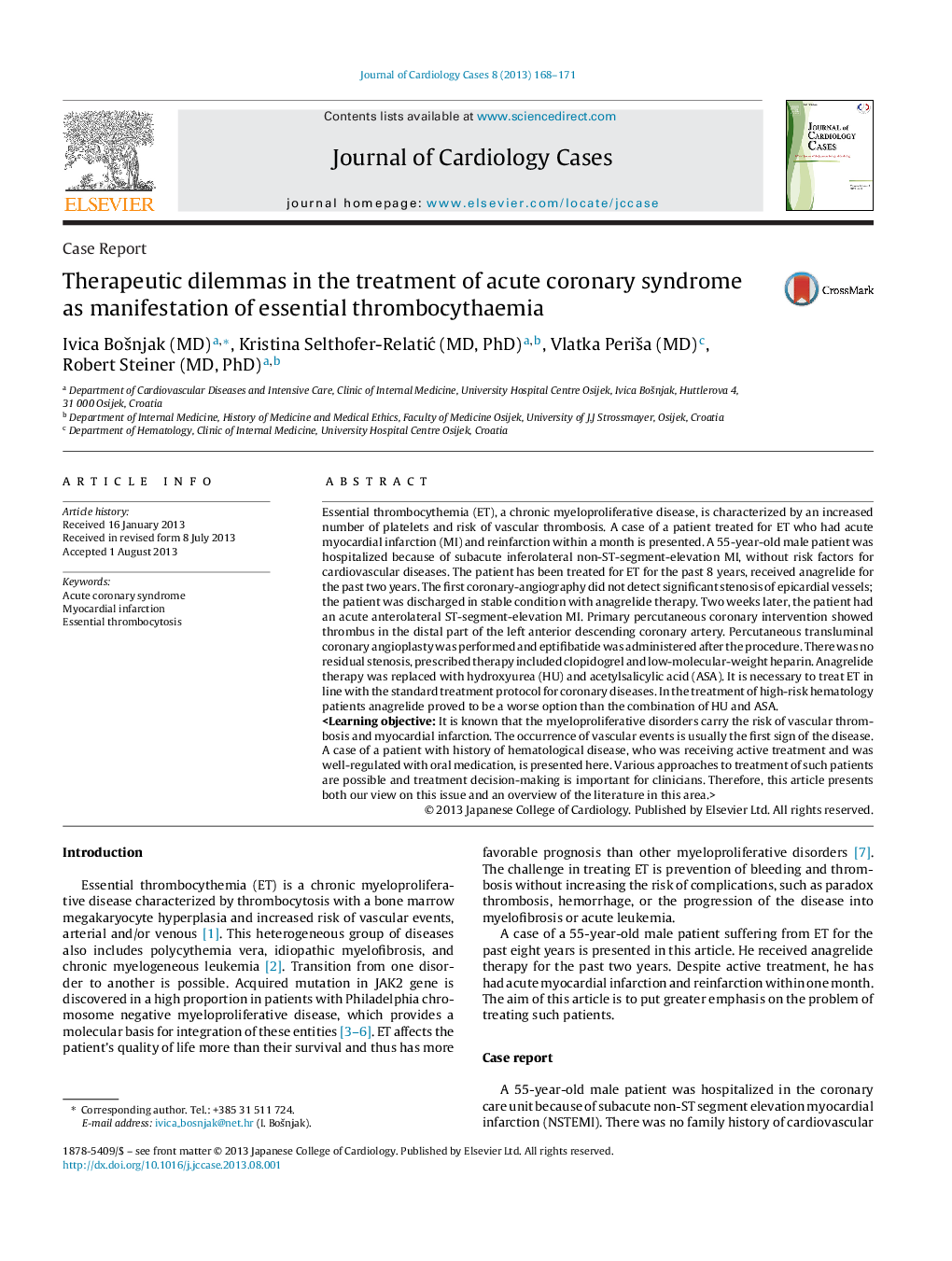| Article ID | Journal | Published Year | Pages | File Type |
|---|---|---|---|---|
| 2963947 | Journal of Cardiology Cases | 2013 | 4 Pages |
Essential thrombocythemia (ET), a chronic myeloproliferative disease, is characterized by an increased number of platelets and risk of vascular thrombosis. A case of a patient treated for ET who had acute myocardial infarction (MI) and reinfarction within a month is presented. A 55-year-old male patient was hospitalized because of subacute inferolateral non-ST-segment-elevation MI, without risk factors for cardiovascular diseases. The patient has been treated for ET for the past 8 years, received anagrelide for the past two years. The first coronary-angiography did not detect significant stenosis of epicardial vessels; the patient was discharged in stable condition with anagrelide therapy. Two weeks later, the patient had an acute anterolateral ST-segment-elevation MI. Primary percutaneous coronary intervention showed thrombus in the distal part of the left anterior descending coronary artery. Percutaneous transluminal coronary angioplasty was performed and eptifibatide was administered after the procedure. There was no residual stenosis, prescribed therapy included clopidogrel and low-molecular-weight heparin. Anagrelide therapy was replaced with hydroxyurea (HU) and acetylsalicylic acid (ASA). It is necessary to treat ET in line with the standard treatment protocol for coronary diseases. In the treatment of high-risk hematology patients anagrelide proved to be a worse option than the combination of HU and ASA.
